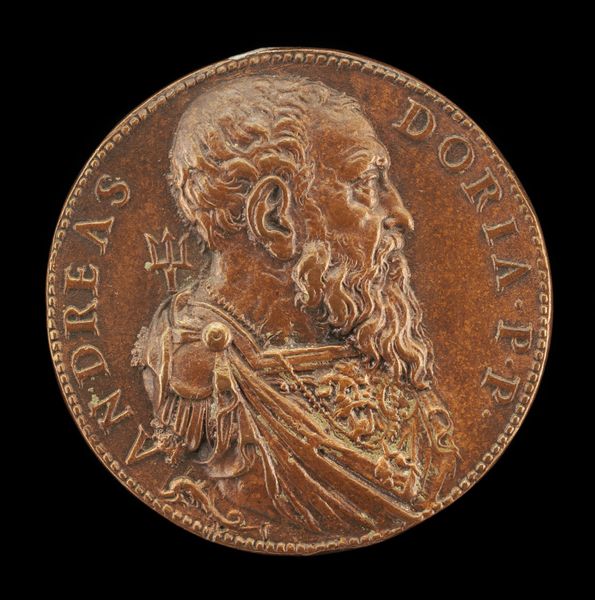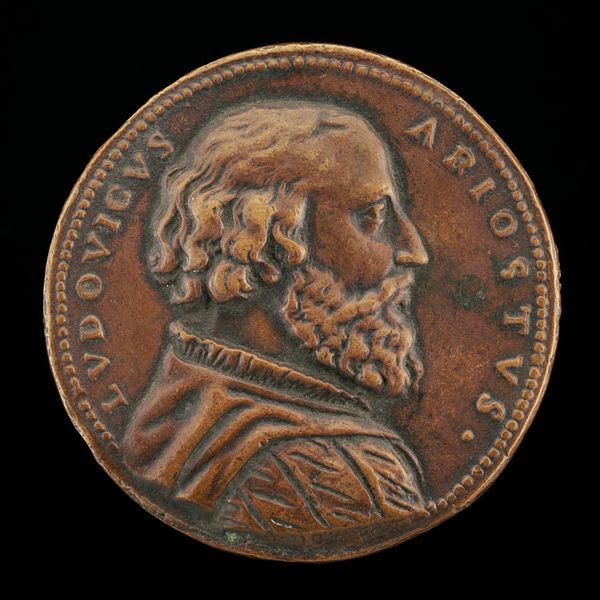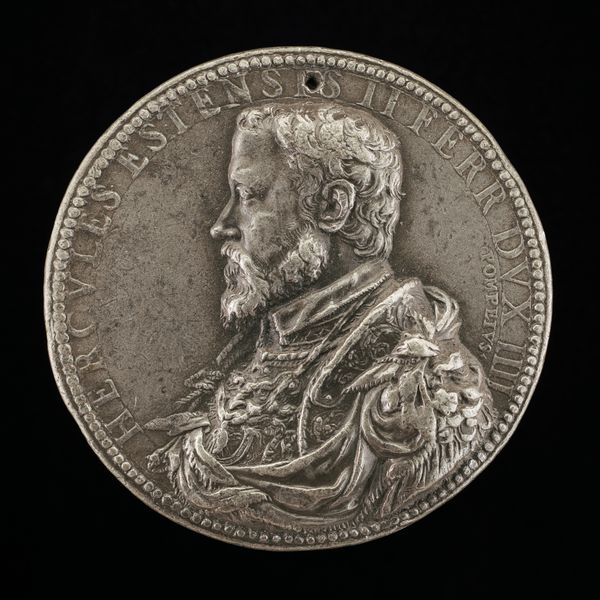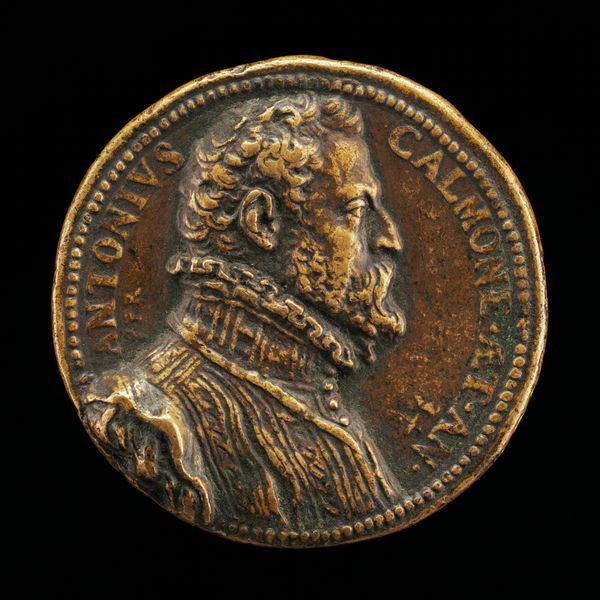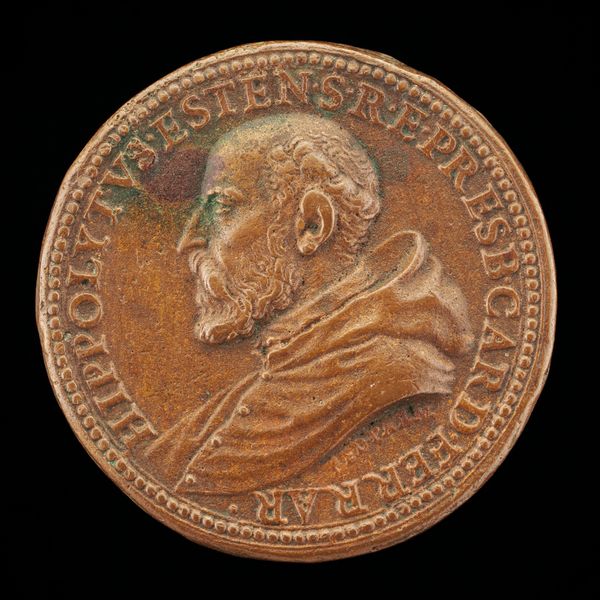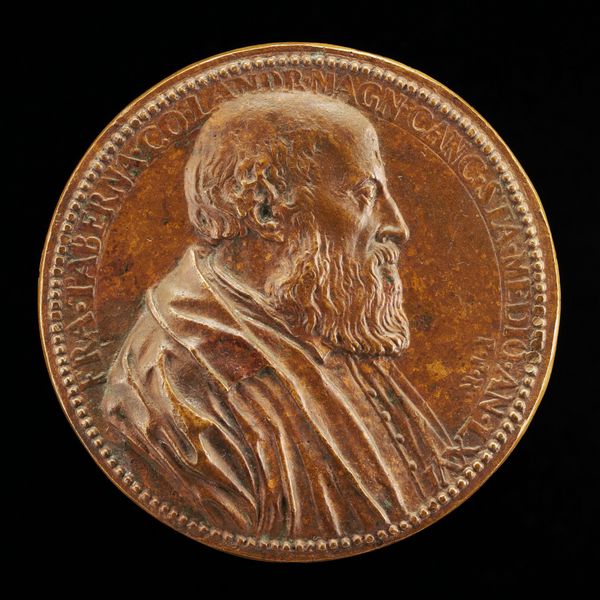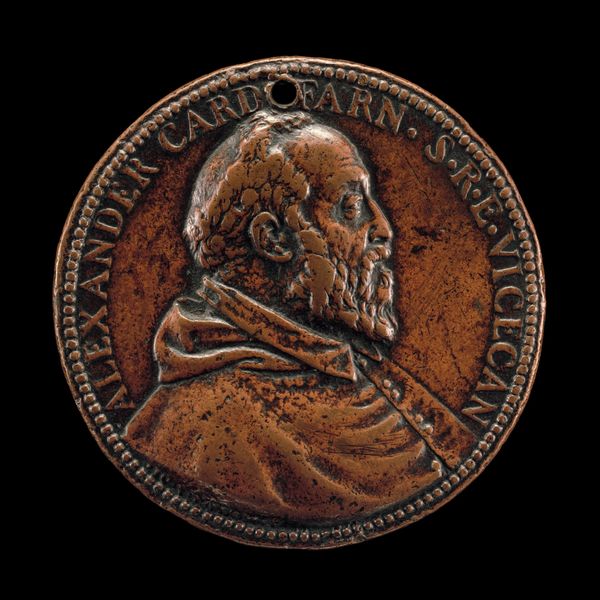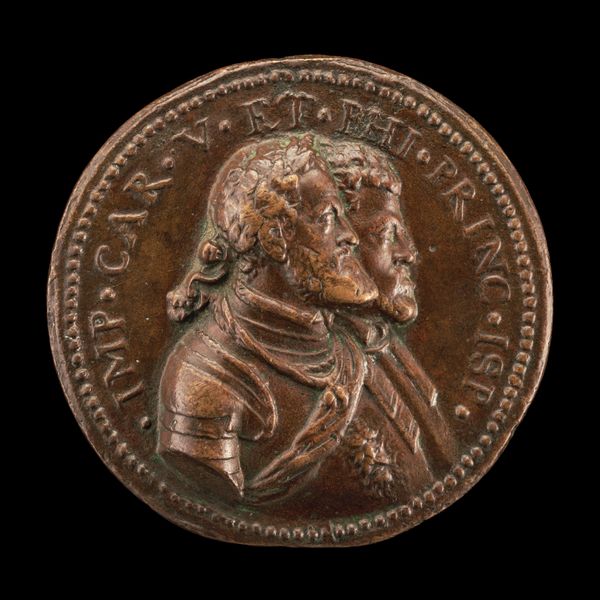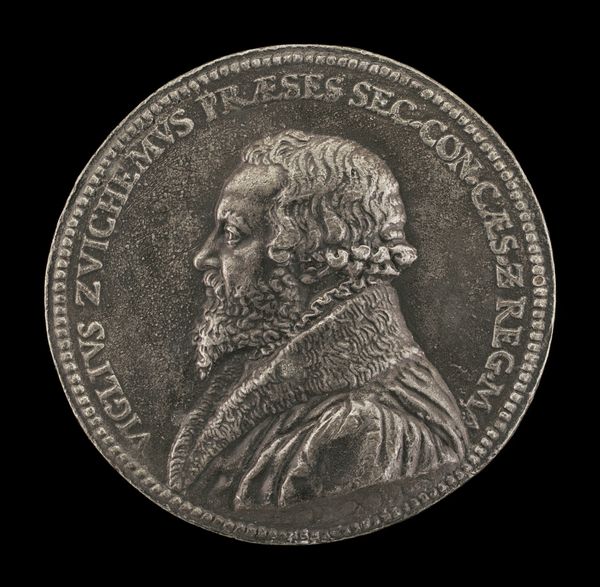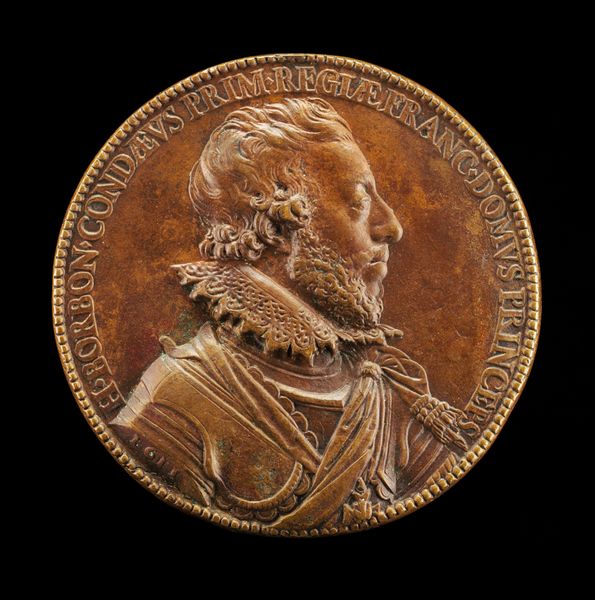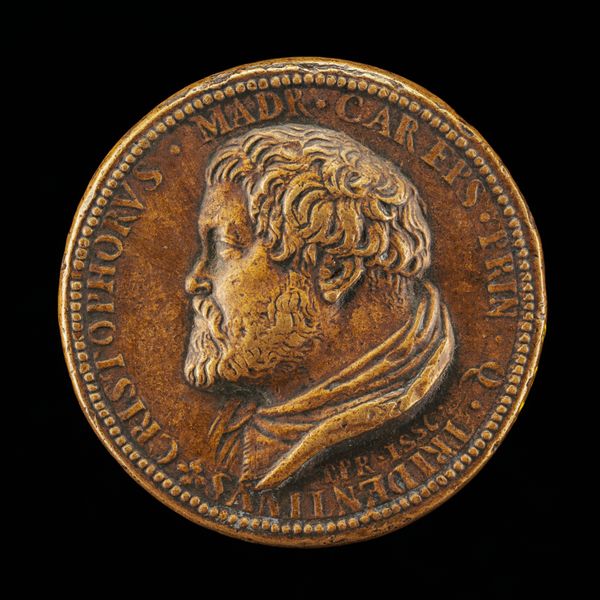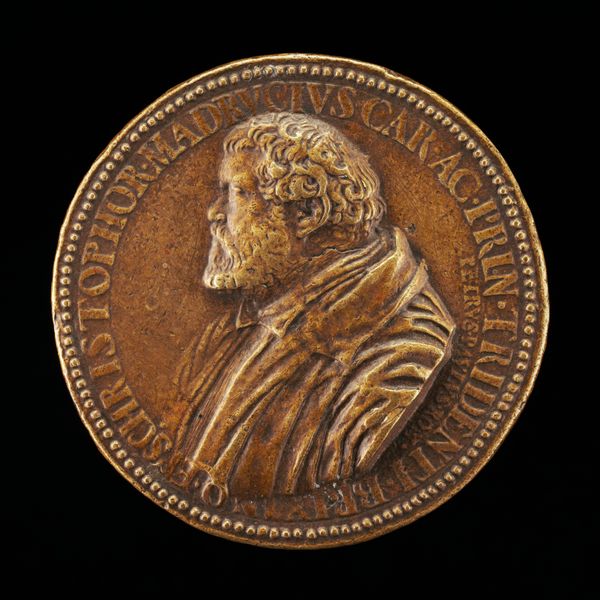![Benedetto Varchi, 1502-1565, Florentine Historian and Man of Letters [obverse] by Domenico Poggini](/_next/image?url=https%3A%2F%2Fd2w8kbdekdi1gv.cloudfront.net%2FeyJidWNrZXQiOiAiYXJ0ZXJhLWltYWdlcy1idWNrZXQiLCAia2V5IjogImFydHdvcmtzL2U2M2JkOTVlLThkNzYtNGVhYS1iOTRiLWU4ODNmMGVjODJmMi9lNjNiZDk1ZS04ZDc2LTRlYWEtYjk0Yi1lODgzZjBlYzgyZjJfZnVsbC5qcGciLCAiZWRpdHMiOiB7InJlc2l6ZSI6IHsid2lkdGgiOiAxOTIwLCAiaGVpZ2h0IjogMTkyMCwgImZpdCI6ICJpbnNpZGUifX19&w=3840&q=75)
Benedetto Varchi, 1502-1565, Florentine Historian and Man of Letters [obverse] before 1566
0:00
0:00
bronze, sculpture
#
portrait
#
medal
#
sculpture
#
bronze
#
11_renaissance
#
sculpture
#
italian-renaissance
Dimensions: overall (diameter): 5.14 cm (2 in.) gross weight: 56.81 gr (0.125 lb.) axis: 12:00
Copyright: National Gallery of Art: CC0 1.0
Curator: Up next, we have a bronze medal created before 1566 by Domenico Poggini. It depicts Benedetto Varchi, the Florentine historian and man of letters. Editor: Wow, it’s remarkably preserved for something so old. The level of detail, especially in his beard and hair, is captivating. It makes you want to touch it, to feel the contours. It has such gravitas, don't you think? Like a small portal into another time. Curator: Absolutely. Portrait medals like these served as miniature monuments, portable celebrations of a person's accomplishments and status. Varchi was a prominent figure, and having his likeness immortalized in bronze reflects his importance in Renaissance society. Editor: It's interesting how these medals functioned almost like profile pictures before photography. It's like saying, "This is me, this is what I represent." Except in solid metal! Imagine having this displayed on your desk – quite the statement. Curator: Indeed. They circulated among the elite, acting as both commemorative objects and tools for building social networks. To own a medal of someone like Varchi indicated your connection to humanist circles and intellectual life. Editor: So, it’s not just art, but a political symbol too, wouldn’t you say? A way to broadcast affiliations and values in a pretty tangible manner. Also, did the sitter and artist decide together what view of Varchi to capture? Was there some self-fashioning involved? I wonder... Curator: That’s a great question, and likely so! There’s a dialogue involved in every commission like this. It shows a particular self-conscious construction of identity that was part and parcel of the Renaissance. I find this piece is also a reminder that history is not just about names and dates, but about how people chose to present themselves. Editor: Precisely! This humble little disc tells us so much. I feel like I understand the Renaissance a little bit better now.
Comments
No comments
Be the first to comment and join the conversation on the ultimate creative platform.
